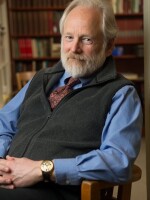“The center cannot hold,” wrote the poet Yeats in 1919: “The best lack all conviction, while the worst/Are full of passionate intensity...”
The poet’s words still ring true today, with one exception: it’s not clear there is a center. Today’s American politics is a contest of extremes with few shared values, few common assumptions; merely increasingly angry arguments about ideology. When there’s no one in the middle to broker a deal, it becomes impossible to build coalitions and find compromise.
Political analyst Dan Balz recently outlined the ingredients of partizan polarization. For example, Democrats currently have sufficient advantage in the electoral college to elect presidents, while the set-up of Congressional districts permits Republicans to control the House of Representatives. Neither side needs the other. House conservatives aren’t dependent on those who voted for the president and vice versa. Since they don’t have to compete for the same base, neither has an incentive for compromise. Increasingly the two parties are demographically, geographically, and even racially separate, differences reinforced and sharpened by the presence of big money in political campaigns, the influence of outside interest groups, and the echo chamber of talk radio and cable TV. As America’s economic middle class disappears, pundits like Balz argue, so is its moderate political middle. Congressional redistricting, which many hold responsible for this situation, is in fact more a symptom of the problem than a cause.
The result is a politics of anger in which compromise is defined as total surrender by the other side and the default mode of conducting business is to fight rather than bargain. Polarization hasn’t yet reached the levels of the 1790’s or the 1850’s, when Congressmen fought duels and went to sessions armed, but it’s worse than at any time since the Civil War – in which we learned that democracies splinter without a center.
Today, some argue that only a major external shock – like Pearl Harbor – will push people back to the center, though neither 9/11 nor the Great Recession did so. Others maintain that the public will become so fed up that it’ll reject one party and give total control to another. But history shows that this occurs rarely and only temporarily. Perhaps, as happened twice in the 19 th century, current party alignments will self-destruct amid the tensions of the time and a new arrangement will emerge in which a center re-appears.
The challenge is not recapturing the middle but re-creating one. It’ll be a long, difficult task; building from the bottom up, county by county, state by state. But as the dysfunction grows, as the ability diminishes for opposing lawmakers even to have a civil conversation, let alone an honest political discussion, the missing middle in American politics may re-emerge in the form of newly engaged Americans, many of them young.
As a gesture of support for such a movement let me offer a campaign slogan: “What is it about ‘You’re being robbed’ that you don’t understand?”






